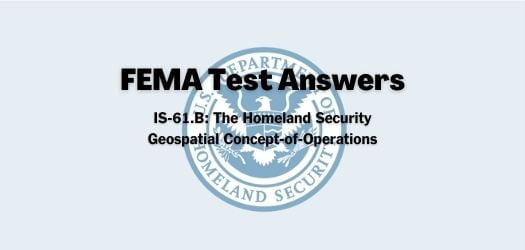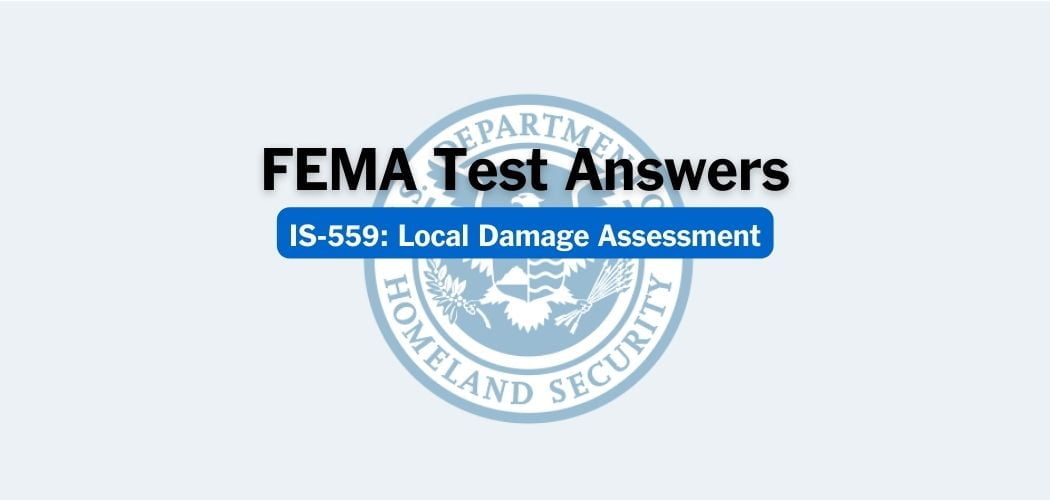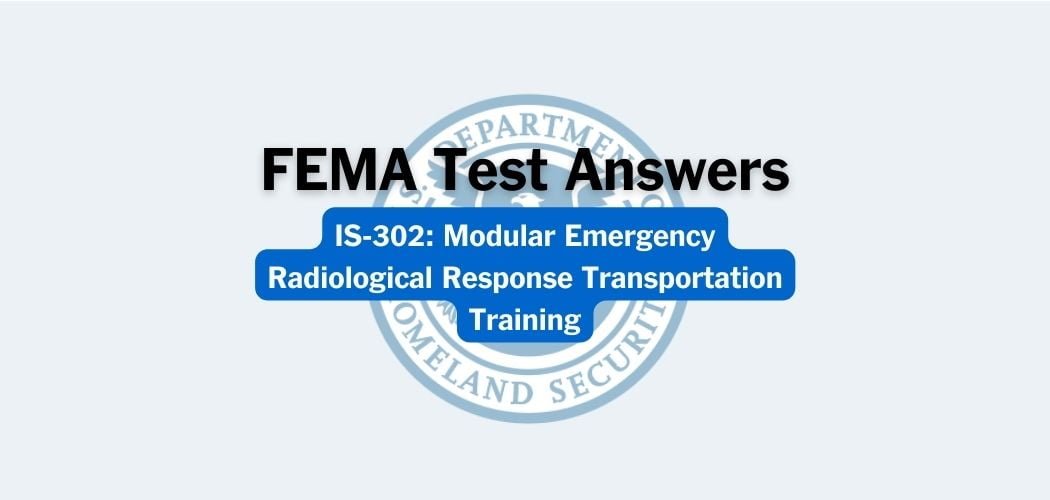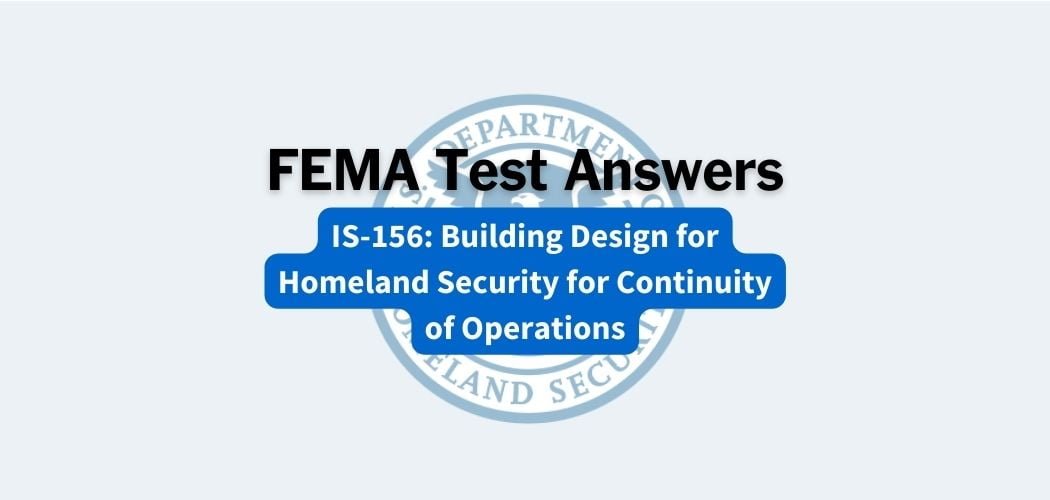Overview: FEMA IS-36.A course was published on 10/1/2021 to provide childcare providers, in a variety of settings, with the information they need to identify, assess, and plan for hazards at their childcare site.
Primary audience: FEMA IS-36.A is designed for childcare providers of all sizes and for all age children, including, but not limited to, home childcare sites, childcare facilities, nursery schools, camps, scouts, sports programs, faith-based programs, and after-school programs.
FEMA IS-36.A test answers
Each time your test is loaded, you will receive a unique set of questions and choices. The test questions are scrambled to protect the integrity of the exam.
Questions 1. How do you calculate risk?
A. Risk times Probability
B. Risk minus Impact
C. Impact plus Probability
D. Probability times Impact✅
Questions 2. Which of the following hazards are NOT preventable?
A. Fires.
B. Child abductions.
C. Explosions.
D. Tornado.✅
Questions 3. Which event does NOT require a review and update of your plan?
A. End of the school year.
B. A random Wednesday.✅
C. After an emergency.
D. Following an exercise.
Questions 4. Which is not a specific audience mentioned in the course that you should share your plan with?
A. Local businesses
B. First responders✅
C. Staff
D. Parents/Legal guardians
Questions 5. What will directly affect how your business returns to operation following a facility-specific emergency?
A. Your State.
B. FEMA.
C. Your Plan.✅
D. The local government.
Questions 6. When should you start sharing your plan?
A. After an emergency.
B. When you do research on procedures.
C. When you are done developing it.✅
D. When you identify the hazards.
Questions 7. Which of the following is not part of your business continuity plan?
A. Risk assessment
B. What resources do you need to conduct business.
C. Identify your critical tasks and functions.
D. Where to get your resources.✅
Questions 8. After you have identified how you will address the highest consequence and most likely hazards and threats for your site?
A. You can conduct drills with your children and staff.
B. Your next step is to get input from your community.
C. You do not need to consider hazards or threats again.
D. Your emergency plan is complete.✅
Questions 9. To identify hazards and threats for the emergency plan, consider:
A. Hazards that have occurred in only the past 10 years.
B. Only those hazards that would lead to catastrophic consequences.
C. Those hazards that are most likely and of the highest consequence to your site.✅
D. Financial loss calculations to prioritize preparedness activities and resources.
Questions 10. Who should notify emergency services for a non-life-threatening emergency?
A. The first person to realize there’s an emergency.
B. The person identified in your plan.✅
C. The most senior staff member.
D. The person who activates the plan.
Questions 11. Which of the following statements about preparing your site for an emergency is FALSE?
A. It is important to know the severe weather risks that may impact your site.
B. Being aware of hazards helps you prioritize and plan for the hazards.
C. Only trained professionals can develop emergency plans.✅
D. An important part of preparing your site is including the whole community to help you identify hazards.
Questions 12. If there is severe weather forecasted for your area before your site opens, you should:
A. Have the children dropped off at the childcare’s evacuation location.
B. Treat the day like any other.
C. Shelter-in-Place.
D. Close the facility.✅
Questions 13. Updating your plan is:
A. Not necessary
B. A linear process
C. Difficult
D. A cycle✅
Questions 14. Recovery from an incident can take a long time, so you should:
A. Rely on the community to address recovery efforts for your site.
B. Wait for an incident to occur to accurately identify necessary recovery processes.
C. Focus your recovery planning only on physical site requirements.
D. Include short-term and long-term procedures for recovery during planning.✅
Questions 15. Which of the following is not a plan stakeholder?
A. Local schools.
B. Mail carrier.✅
C. Parent/Legal guardian.
D. Staff.
Questions 16. Which is not a step on the updated plan flowchart?
A. Identify things that didn’t work as planned and any new ideas.
B. Evaluate how things went. Did the plan work?
C. Develop the original plan.✅
D. Develop ways to improve things that didn’t work as planned.



